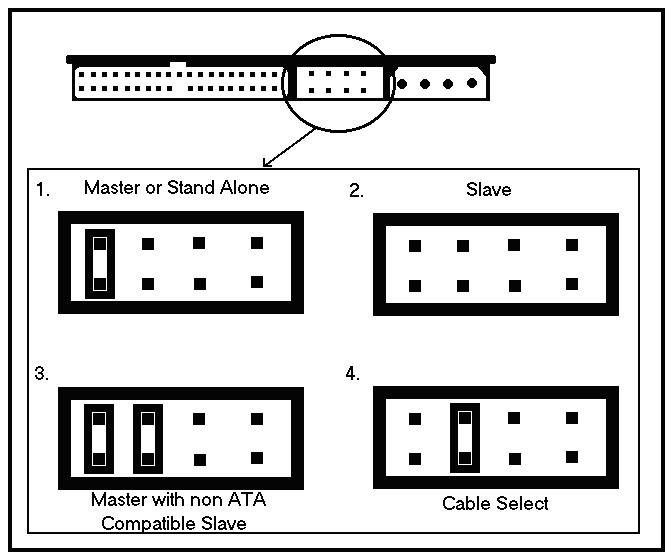| |
IDE/ATA hard disks are fairly standard in terms of jumpers. There are usually only a few jumper settings and they do not vary greatly from drive to drive. Here are the jumper’s settings you will normally find in a hard disk:
- Drive Select: There may be two drives, master and slave on the same IDE channel. A jumper is normally used to tell each drive if it should function as a master or slave on the IDE channel.
- For a single drive on a channel, most manufacturers instruct that the drive be jumpered as master, while some manufacturers notably Western Digital have a separate setting for a single drive as opposed to a master on a channel with a slave. The terms master and slave are misleading since the drives really have no operational relationship.
- Slave Present: Some drives have an additional jumper that is used to tell a drive configured as master that there is also a slave drive on the ATA channel. This is only required for some older drives that don't support standard master/slave IDE channel signaling.
- Cable Select: Some configurations use a special cable to determine which drive is master and which is slave, and when this system is used a cable select jumper is normally enabled.
- Size Restriction Jumper: Some larger hard disk drives do not work properly in older computers that do not have a BIOS program or large hard disk support recognize them. To get around this, some drives have special jumpers that when set, will cause them to appear as a smaller size than they really are to the BIOS for compatibility.
For example, some 2.5 GB hard disks have a jumper that will cause them to appear as a 2.1 GB hard disk to a system that won't support anything over 2.1 GB. These are also sometimes called capacity limitation jumpers and vary from manufacturer to manufacturer.

Example of jumper setting of a Seagate Technology hard Disk model
SCSI hard disks have more sophisticated controllers than that of IDE/ATA hard disks therefore SCSI typically have many more jumpers that can be set to control their operation. They also tend to vary much more from manufacturer to manufacturer and from model to model in the number and types of jumpers they have.
|
|


